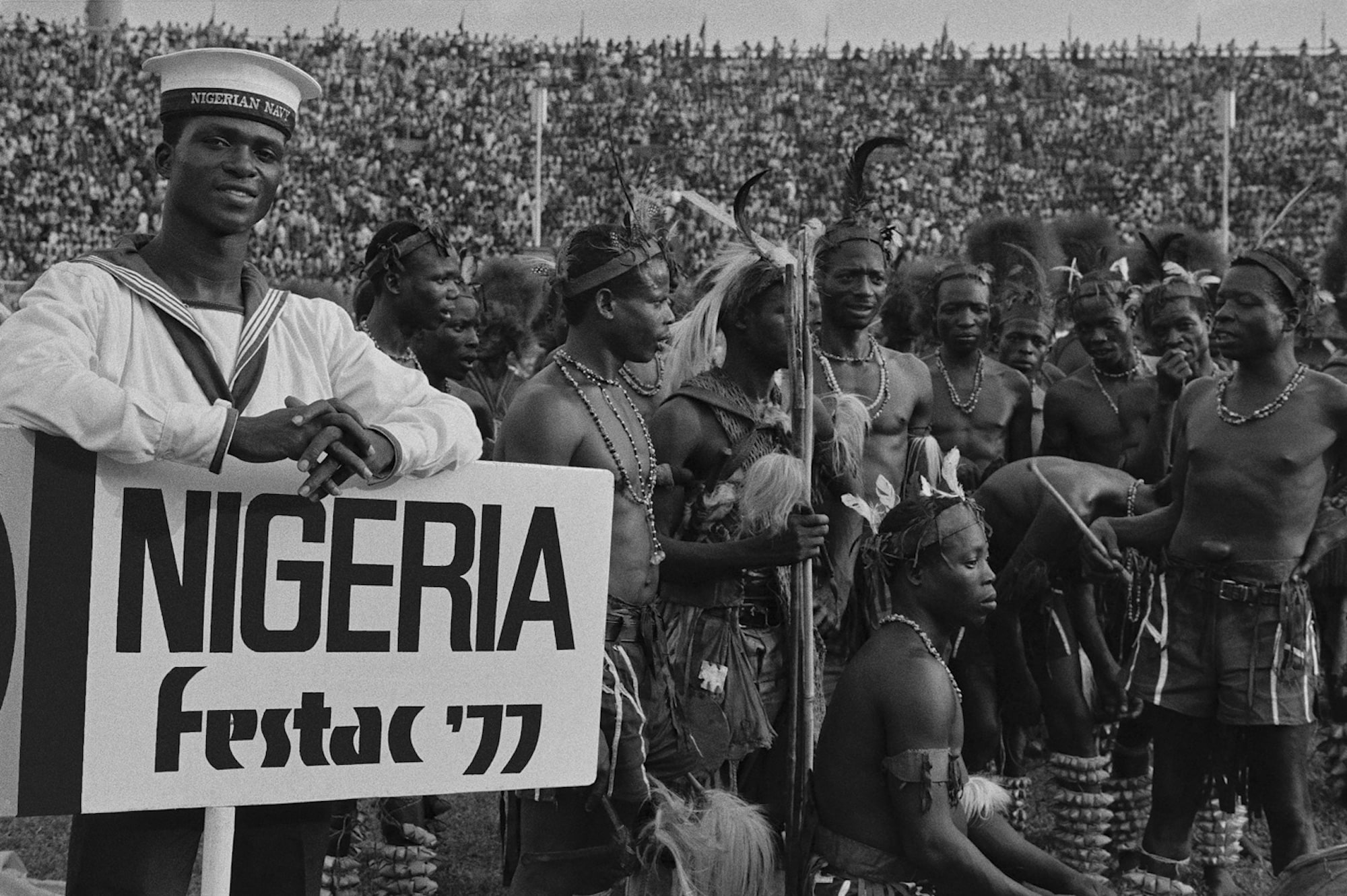Back to: History Primary 5
Hello, my amazing Afrilearn superstar! I hope you are having a fantastic day. You are doing an excellent job learning about Nigeria’s history, and I am so proud of you! Today, we will talk about a special event that brought together Black and African people from all over the world—FESTAC ‘77. Have you ever been to a big festival with music, dance, food, and art? Well, FESTAC ‘77 was one of the biggest cultural celebrations in Africa’s history! Let’s find out what made it so special.
FESTAC ‘77 – The Second World Black and African Festival of Arts and Culture
Imagine your school organising a grand event where students from different schools come together to share their traditions, songs, dances, and food. That would be an exciting and colourful celebration, right? Well, that is exactly what FESTAC ‘77 was—an event where people of African descent from all over the world came to Nigeria to celebrate their culture, music, art, and history. It was the Second World Black and African Festival of Arts and Culture, and it was held in Lagos, Nigeria, from January 15 to February 12, 1977.
 FESTAC ‘77 was the second of its kind, following the first festival held in Senegal in 1966. The Nigerian government, under General Olusegun Obasanjo, organised the festival to promote African heritage and unity. Over 16,000 participants from 56 countries attended the event, including musicians, dancers, writers, artists, and scholars.
FESTAC ‘77 was the second of its kind, following the first festival held in Senegal in 1966. The Nigerian government, under General Olusegun Obasanjo, organised the festival to promote African heritage and unity. Over 16,000 participants from 56 countries attended the event, including musicians, dancers, writers, artists, and scholars.
The festival aimed to:
- Celebrate African arts and culture – It showcased traditional music, dance, theatre, literature, and visual arts.
- Promote African unity – It brought together Black people from all over the world, including Africa, the Caribbean, North and South America, and Europe.
- Preserve African heritage – It reminded Africans and people of African descent about their rich history and traditions.
One of the most famous symbols of FESTAC ‘77 was the FESTAC Mask, originally a Benin ivory mask that represented African royalty and strength. The festival was hosted in various locations in Lagos, with the National Theatre in Iganmu, Lagos, built specially for the event.
FESTAC ‘77 was filled with colourful performances, music, exhibitions, and discussions about African history and identity. It was a proud moment for Nigeria, as the country showed its leadership in African culture and heritage.
 Think about how exciting it is when Nigeria wins a football tournament and the whole country celebrates. Now, imagine a festival where the whole of Africa and Black people from around the world come together to celebrate their traditions, music, and stories. That’s what FESTAC ‘77 was like—a joyful and historic event that united people of African descent from all over the world!
Think about how exciting it is when Nigeria wins a football tournament and the whole country celebrates. Now, imagine a festival where the whole of Africa and Black people from around the world come together to celebrate their traditions, music, and stories. That’s what FESTAC ‘77 was like—a joyful and historic event that united people of African descent from all over the world!
Conclusion
FESTAC ‘77 was held in Lagos, Nigeria, from January 15 to February 12, 1977, under General Olusegun Obasanjo. It was a festival that celebrated African arts, culture, and unity, with over 16,000 participants from 56 countries. The event helped to preserve African heritage and remind the world of the beauty and richness of Black and African culture. The National Theatre in Lagos remains a lasting symbol of FESTAC ‘77.
Evaluation
- What does FESTAC ‘77 stand for?
- In what year and city was FESTAC ‘77 held?
- Who was Nigeria’s leader when FESTAC ‘77 was hosted?
- What was the main purpose of FESTAC ‘77?
- Mention one important symbol of FESTAC ‘77.
Fantastic job, my superstar! You have just learned about a great moment in Nigeria’s history. Keep that curious mind sharp because the more you learn, the more powerful you become! Remember, with Afrilearn, learning is fun and exciting. See you in our next lesson!
